The prime time golf season is approaching, and we want to make sure you are tip top shape before you tee off! Have you ever experienced back pain during or after playing golf? Is back pain affecting your swing? Believe it or not, the low back is typically NOT the cause of your pain, but it is often the source.
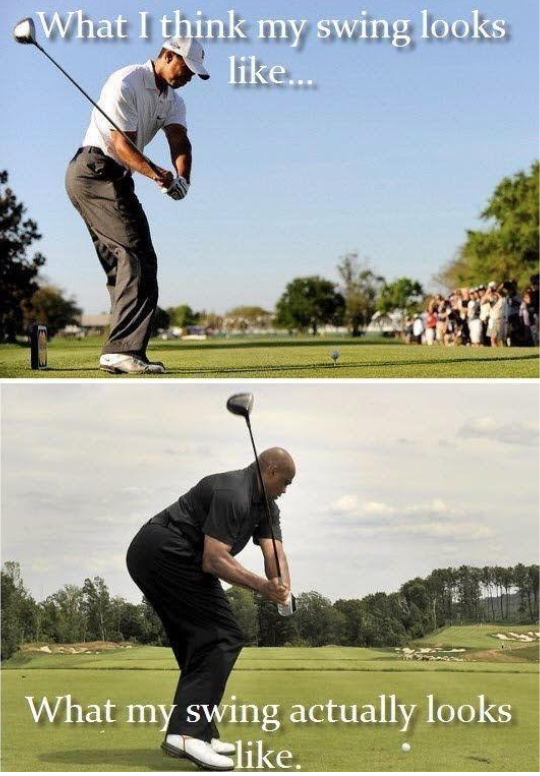
In reality, let’s think about all the fun positions that golfing can put you in on your next outing.
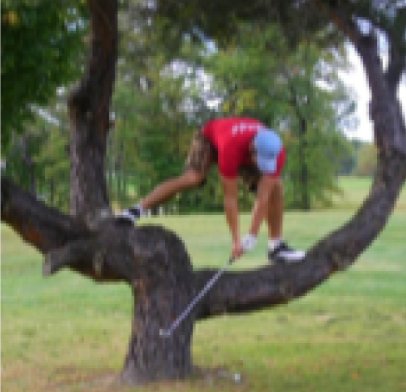
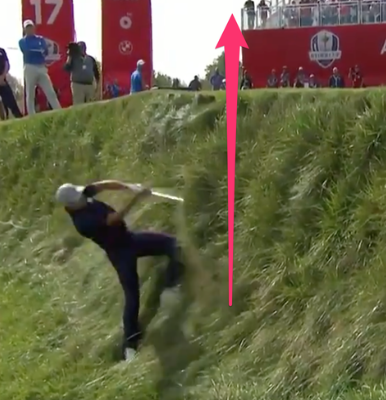
“I got this. If Spieth can do it, I can do it.”
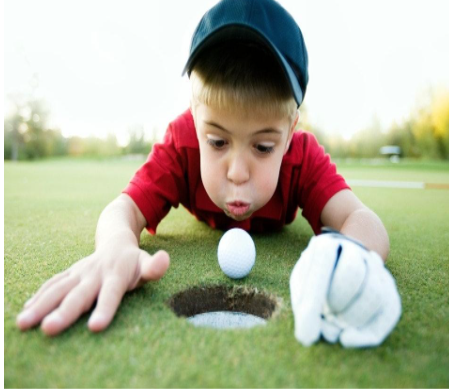
In the words below, I’m gonna dive into why lower back pain is so common in this addicting sport, and break down some of the most common swing faults associated with golfers and back pain.
First off, golf is a rotational sport, meaning it requires an appropriate amount of rotational mobility and strength in order to be effective and powerful. The problem here is the joints in the lower back are mainly designed to flex and extend (bend forward and bend backward), so the rotation needed must come from above and below – mid back and hips. Combine this with a lack of strength, the swing typically results in early low back extension, loss of upright posture, arching the back, and excessive side-to-side movement – all leading to pain and loss of power.
So, let’s dive into the 5 most common faults that occur in the swing.
1. Posture
Your starting stance position can make or break your swing. The key here is a hip hinge at the pelvis, which involves sitting your hips back without any movement coming from the spine.
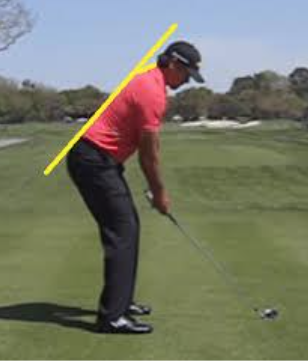
When you screw up your hip hinge, it will typically result in 1 or 2 postures in the initial set-up: the C-posture and the S-posture. The C and S refer to the curvature of your spine in the start position, and when you’re in these positions, your risk of injury skyrockets, decreasing efficiency, and causing a big drop off in power. Check out the picture below to see what I mean. So remember to obtain a proper hip hinge and DO NOT let your back round out or let your pelvis tilt!
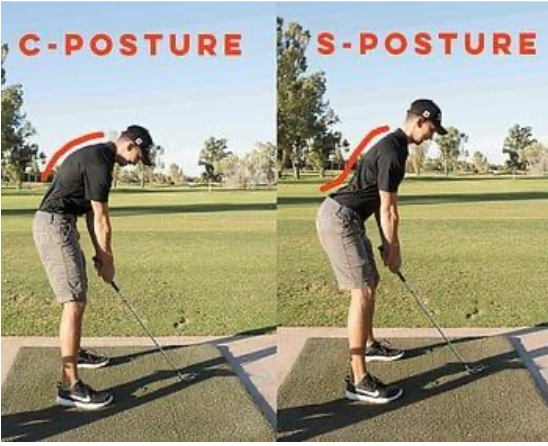
2. Upper Body Backward Bend During The Backswing
What does this even mean? During the backswing, we often see what’s called a Reverse Spine Angle. This is essentially when you lean your torso and head towards the target during the backswing. In an attempt to create a larger backswing, the spine then arches and puts excessive tension on the lower back. This is easily one of the biggest causes of back pain in golf. On top of that, it can be really difficult to start the downswing in the appropriate sequence, usually resulting in a nasty slice. So, what does a reverse spine angle look like? Check the picture below and see if this looks like you!
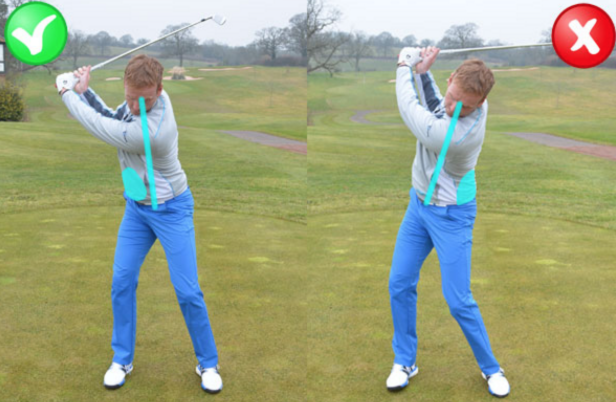
3. Sway
This is when you have excessive lower body movement away from the target during the backswing. This happens when you force too much weight to the back leg, causing the hip to sway beyond your back foot. We see this fault most commonly when the athlete lacks appropriate hip and torso rotation. In an effort to generate a normal backswing, they have to sway further on the back foot to make up for the lack of mobility. Then, the transition to the downswing is altered, often resulting in decreased power. Over time, the lower back starts to rotate – which we know it’s not supposed to do – leading to pain…. especially when you’re trying to bomb it off the tee for that 300+ drive!
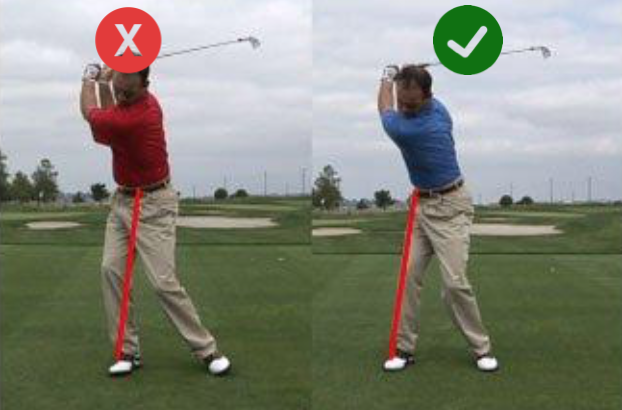
4. Slide
Slide is very similar to Sway, but it is in the opposite direction. Slide is any excessive lower body movement TOWARDS the target during the downswing. This is often seen when you force your weight, hip, and/or knee forward of your front foot. When this happens, it’s typically due to a lack of strength from the lower half of the body. With an unstable or moving foundation, the upper body and torso have no fixed base to rotate around, causing a decrease in swing speed and power. But since speed kills, golfers will make up for this by trying to swing harder… leading to you guessed it, good ole lower back pain.
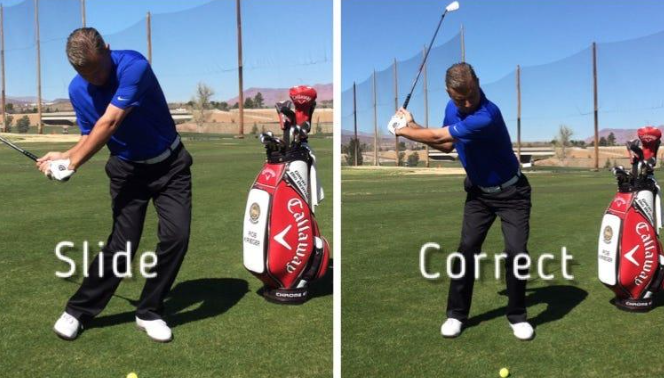
5. Early Extension
Now this one is a bit harder to visualize. Check out the picture below- you can see on the right side, that his hips have moved forward towards the ball from where he started. Now in a typical swing, this should happen AT ball contact. To have early extension just means that the hips have moved forward while the hands are still coming down from the backswing!
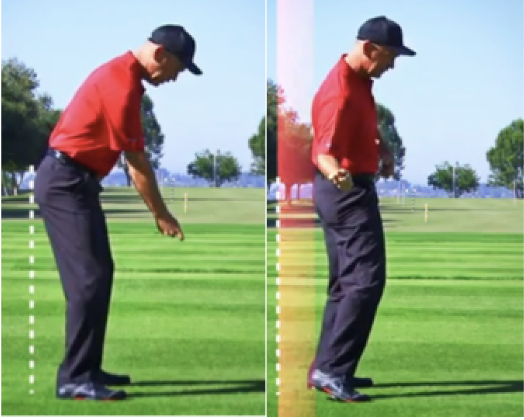
So why does this matter?? Because of the body’s position, his arms no longer have space to travel through the striking zone. This forces the torso to rise up and low back to bend backwards. Just like all the sections before this, overarching or over rotating coming from the low back is a recipe for pain the more often it occurs!
Final Word
If you’re having back pain during or after playing golf, you aren’t alone. Poor movement patterns, mobility limitations, and decreased strength are all causes of these movement faults described above. These issues then result in pain and ultimately the inability to play the sport you love. Unfortunately if left unchecked, pain will eventually start affecting your day-to-day life. Don’t let that be you! Individual assessment of movement patterns and breakdowns of the golf swing are some of our specialties here at The Charlotte Athlete. We can get you out of pain fast, attack the root cause, and teach you how to keep it from coming back. It’s way too early in the season to let pain hold you back! Come see us and let’s take a head-on approach to your health and performance goals both on and off the course!
Cheers to hitting ‘em straight and far… something I can’t seem to accomplish haha!
Dr. Mike

